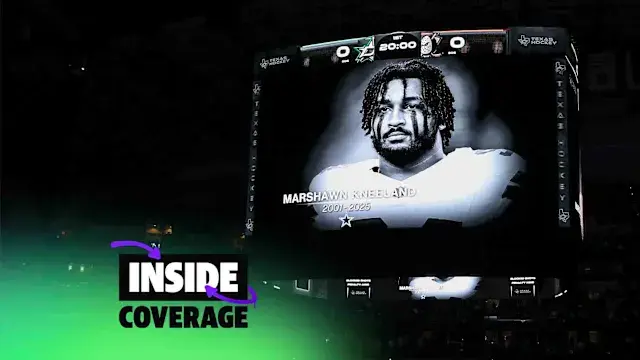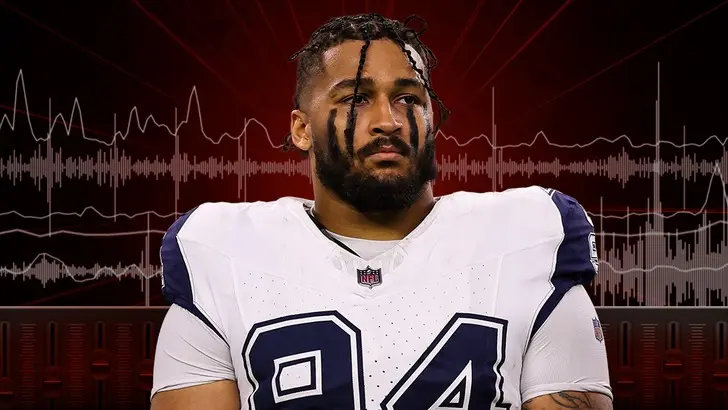Mtp.Breaking News: A source revealed that the NFL Board of Directors viewed the black box video of Marshawn Kneeland, in which Marshawn said: “I’m going to see my mom…” before the crash happened. But what made the meeting room silent was not the image — but the sound of the last 6 seconds. Dak Prescott could not bear it, the obsession overwhelmed him and he had to leave….

BREAKING NEWS: NFL Board Reacts to Black Box Footage of Star Athlete, Unseen Silence Follows
In a shocking development that has sent ripples across the sports world, a confidential source has revealed that the NFL Board of Directors recently viewed a black box video related to a tragic accident involving a high-profile player. The footage, according to insiders, captured the athlete in the moments leading up to a fatal crash, uttering words that have since haunted the league: “I’m going to see my mom…”

The disclosure of the video was intended to shed light on the sequence of events leading up to the incident, but the meeting quickly took an unexpected turn. Those present—including executives, league officials, and security personnel—were stunned not by the images themselves but by the sound of the final six seconds. Sources report that the auditory record of that brief interval produced a visceral, unsettling effect that left the room silent, heavy with disbelief and grief.
One eyewitness claimed that the intensity of the recording was so profound that Dak Prescott, a key figure in the league, was unable to remain. The obsession, they said, overwhelmed him to the point that he had to leave the room abruptly. “It wasn’t the visual—it was the sound,” the source explained. “You could feel it in your chest. Everyone else just froze. It was as if the reality of what happened hit all at once.”

The NFL has not officially confirmed the contents of the black box footage, citing privacy and ongoing internal review. However, the leak has already sparked widespread speculation in both mainstream media and social networks. Fans and journalists alike have debated the possible implications, while mental health professionals have weighed in on the potential psychological impact of such recordings on players, executives, and staff.

According to specialists, hearing the final moments of a colleague or teammate, even indirectly, can produce acute emotional responses, including shock, anxiety, and trauma. Dr. Alicia Reynolds, a sports psychologist specializing in trauma among athletes, stated, “Witnessing a critical event—even via recording—can trigger profound stress. When someone who is close to you, or whom you admire, is involved, the emotional response can be extreme. It’s not unusual for people to need to remove themselves from such environments to process the experience.”
In the confidential meeting, board members reportedly struggled to maintain composure. The sound reportedly included subtle noises and an emotional tone from the athlete that conveyed a sense of urgency and vulnerability. Sources describe the reaction as a combination of grief, disbelief, and an almost tangible tension that filled the room. “You could hear a pin drop,” one insider said. “The silence was deafening.”

Though the league has not released a formal statement about the video, speculation continues regarding the next steps. Legal and safety protocols are expected to be reviewed, and there is pressure to determine whether any preventive measures could have altered the outcome. The NFL has also faced criticism in the past for its handling of sensitive incidents, and this new revelation underscores ongoing concerns about transparency and athlete welfare.
Social media has exploded with both sympathy and analysis. Hashtags related to the player, the black box footage, and mental health in sports have trended worldwide. Many fans expressed sorrow and frustration, while others debated ethical questions surrounding the viewing of such recordings. Should private footage of critical incidents be reviewed publicly? How do organizations balance transparency with respect for the deceased and their families? These questions now dominate discussions across forums, sports media, and news outlets.

The revelation also raises questions about the psychological toll on other players who might be exposed to the footage. Experts note that hearing the last words of a teammate can produce long-term effects, including stress disorders or anxiety, especially if the event is traumatic. In this case, the reported reaction of Dak Prescott—who had to leave the room—illustrates the intensity of the emotional impact, reminding the public that even seasoned professionals are deeply human.
The league is reportedly consulting mental health experts to provide support for board members, staff, and players affected by the disclosure. Confidential counseling sessions, stress management programs, and private briefings are expected to be implemented in the coming days. Observers note that such measures are critical not only for emotional recovery but also to maintain operational effectiveness within the league.
While the content of the black box footage remains under wraps, the leaked description has already left a mark on public consciousness. Fans and analysts alike grapple with the emotional weight of the revelation, the haunting last words, and the extraordinary reaction they provoked. It serves as a sobering reminder of the vulnerability of even the most celebrated athletes and the profound responsibility that leagues and teams carry in protecting their welfare.
As the story develops, attention will likely focus on both internal league protocols and the wider implications for player safety and mental health. For now, the NFL—and the sports world at large—has been forced to confront the harsh realities behind the headlines: that even in controlled professional environments, tragedy and human emotion intersect in ways that no statistic, contract, or record can fully capture.
The black box video, its final six seconds, and the emotional shockwaves it produced have already sparked dialogue that will shape policies, conversations, and approaches to athlete care for years to come. While much remains confidential, the incident underscores one timeless truth: behind every professional career is a human being, capable of vulnerability, fear, and deep emotional experience.


